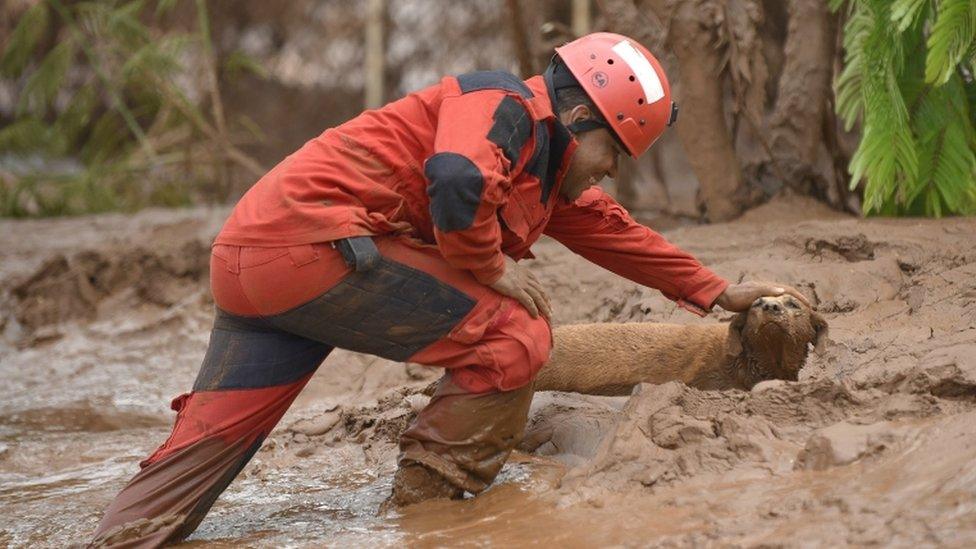Brumadinho dam collapse: 'Little hope' of finding missing in Brazil
- Published
Rescuers are searching for hundreds of people, missing after a dam collapse caused a huge mudslide
Nearly 300 people are missing after a dam collapsed at an iron ore mine in south-eastern Brazil, officials say.
The break caused a sea of muddy sludge that buried the dam's cafeteria where workers were eating lunch on Friday.
Rescue teams used earth-moving machinery at the site near the town of Brumadinho, in Minas Gerais state.
State governor Romeu Zema said there was little chance of finding people alive. So far 11 people have been confirmed dead.
It is not clear what caused the collapse of the dam, owned by Brazil's largest mining company, Vale.
On Saturday, President Jair Bolsonaro flew over the disaster area in a helicopter. He tweeted that it was hard not to get "emotional" after seeing the scale of the devastation.
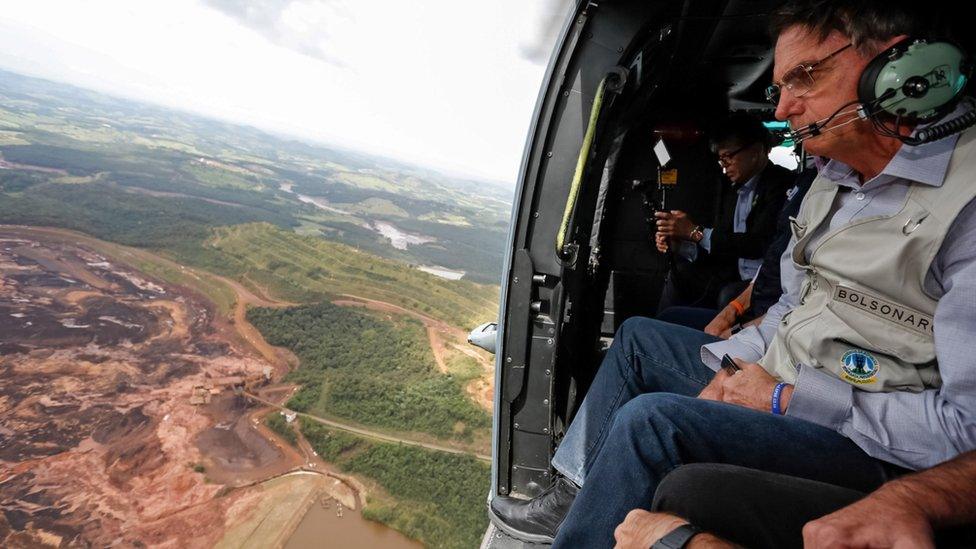
President Jair Bolsonaro said all efforts were being made to rescue survivors
He said he had accepted an offer by Israel to send search equipment that could find people buried in the mud.
Also on Saturday, Brazil's Environmental Protection Agency (Ibama) issued Vale with an initial fine of 250m reais ($66.5m; £50m) in relation to the incident.
Meanwhile a sum of 5bn reais has been frozen from Vale's accounts by a court to help fund recovery works and handle damage claims.
The collapse comes just over three years since a dam burst in Mariana, also in Minas Gerais, killing 19 people, in what is considered Brazil's worst environmental disaster.
What do we know about the collapse?
The dam near Feijão iron ore mine burst its barrier at around 13:00 local time (15:00 GMT) on Friday, flooding another dam down below.
The torrent of sludge cut through the dam's complex, nearby farms and the neighbourhood where many of the workers live, destroying houses and vehicles.
There are reports that the dam's alarm system - which local residents had been trained to respond to - failed at the time of the accident.
But Vale president Fabio Schvartsman said the accident may have occurred too quickly for a siren which triggers security protocols to be activated.
The Globo website later reported that rescue officials provided the following breakdown on the number of the missing:
Between 100 and 150 people in the administrative area close to the burst dam
About 30 people in the Vila Vértico area
About 35 people at Nova Estancia Inn
Between 100 and 140 people in the Parque das Cachoeiras
Dozens of trapped people, many of them covered in mud, had to be evacuated by helicopter as roads were destroyed.
Many other residents have been evacuated as a safety measure.
"I'm anxious, I want news," 28-year-old Helton Pereira told the BBC as he waited outside a hospital in nearby Belo Horizonte - his 28-year-old wife and 35-year-old sister worked at the dam's cafeteria and were both missing.
"From now, the odds are minimal and it's most likely we'll recover only bodies," Governor Zema said.
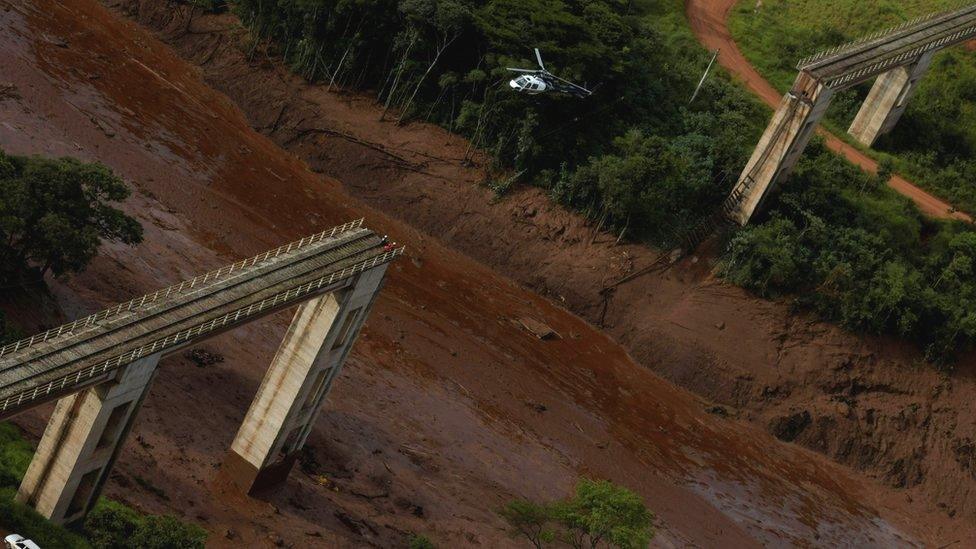
The dam is owned by Brazil's largest mining company, Vale
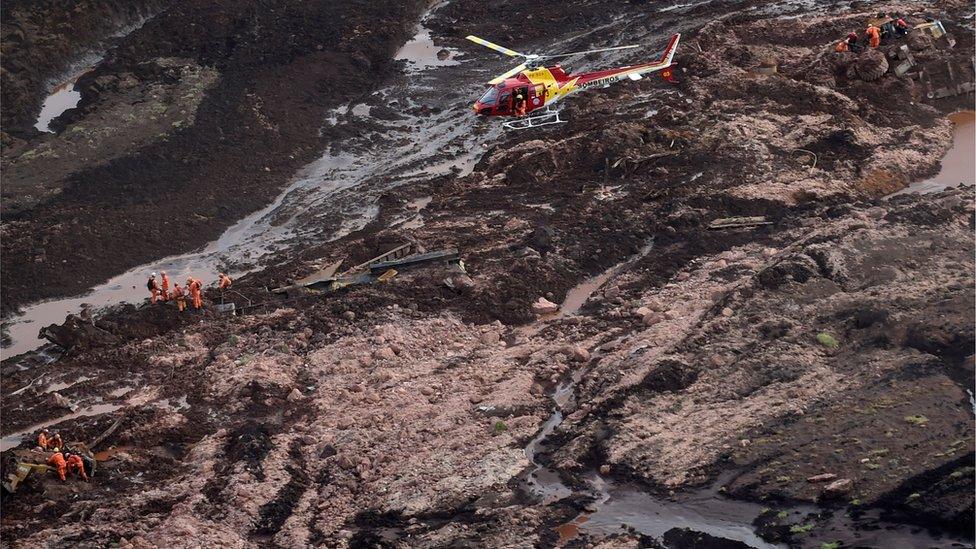
Hopes are fading for survivors
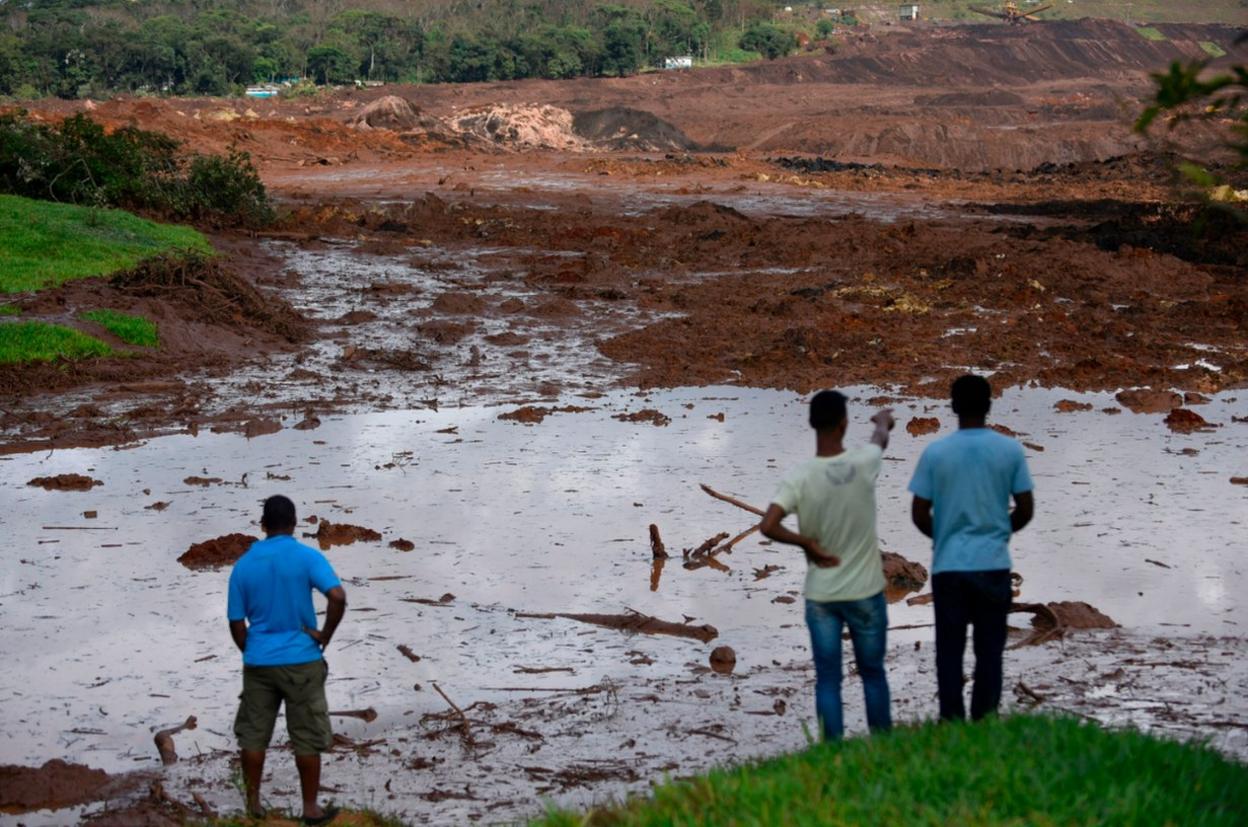
The powerful current swept everything in its way
Built in 1976, the dam was one of several in the area and it was used to hold residue from the mine.
It had capacity for 12m cubic metres and had been an inactive site for three years, Vale said.
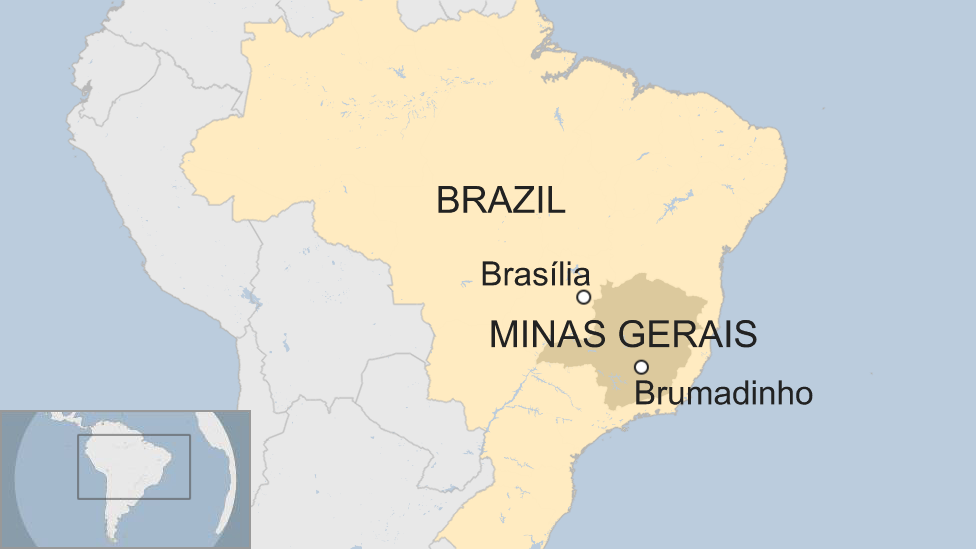
What has the reaction been?
Mr Schvartsman called it a "human tragedy" and said a German company, hired to assess the dam, indicated in the most recent report last September that it was stable.
The firm said it was monitoring all its other dams.
A report by Folha de S.Paulo newspaper said the risk of collapse of the dam had been mentioned in a "tense meeting" that approved its licence, external last month (in Portuguese).

Roads have been destroyed by the sludge, complicating rescue efforts
The environmental activist group Greenpeace said the dam break was "a sad consequence of the lessons not learned by the Brazilian government and the mining companies."
It said the incidents "are not accidents but environmental crimes that must be investigated, punished and repaired".
What happened in 2015?
On 5 November 2015, a dam - also owned by Vale, along with BHP Billiton - burst at a Samarco mine in Mariana.
More than 60m cubic metres - enough to fill 20,000 Olympic swimming pools - spilled over into the surrounding area.
After a lengthy court case, BHP Billiton and Vale reached a settlement worth at least 6.8bn reais with the Brazilian government.
- Published23 July 2018
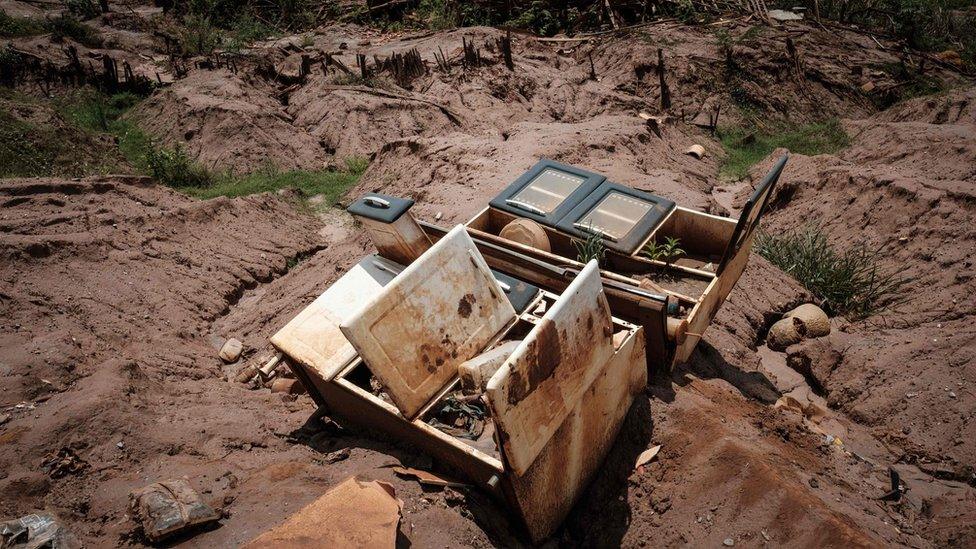
- Published23 February 2016
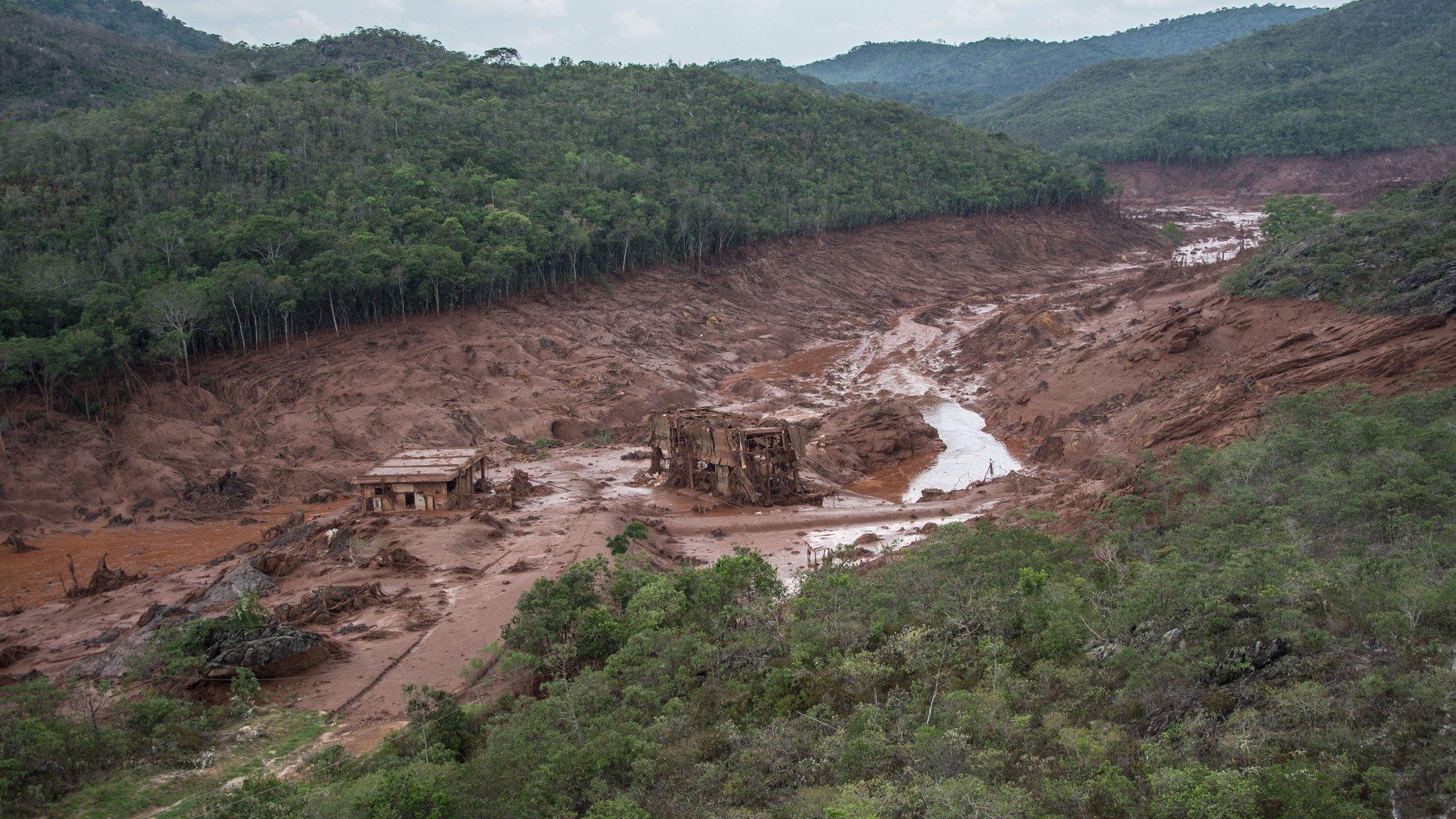
- Published19 January 2017
